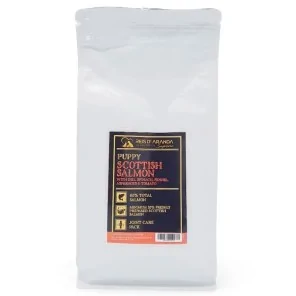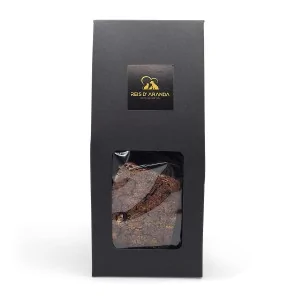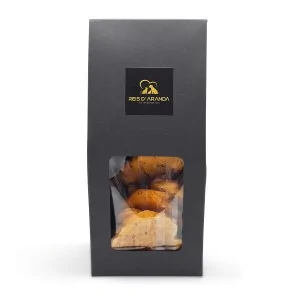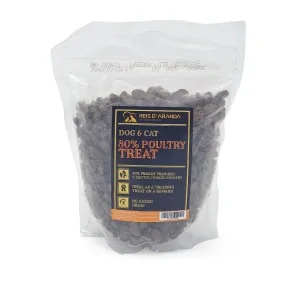Its name says it all: the Vienna blue rabbit comes from Austria. Not only is it beautiful with its shiny blue-grey...
THE ARDENNES CATTLE DOG
INTRODUCTION
The Ardennes Cattle Dog (‘Bouvier des Ardennes’) is a rare breed of Cattle Dog originating in the mountainous region of the Belgian Ardennes, bordering France and Germany.
THE HISTORY OF THE ARDENNES CATTLE DOG
In the past, dogs that worked with cattle were called ‘bouvier’ (cattle dogs); each region had its own variety. These dogs were highly valued guard dogs. With the motorisation of agricultural work, the need to walk cattle to market disappeared and with it the presence of these dogs.
In Belgium and other central European countries, dogs of a certain stature were also used to pull small carts, for example those of milkmen. The Ardennes Cattle Dog was occasionally used as a hunting dog in the region from which it originates, which is poor in soil but traditionally rich in big game.
These cattle dogs were virtually wiped out during the First World War and many of the rarer breeds were lost. Some of them were: Bouvier de Roulers, Bouvier de Moerman and the Bouvier de Paret. The Ardennes Bouvier and the Flanders Bouvier still survive. Both France and Belgium claim to be the birthplace of the Flanders Cattle Dog, and the FCI classifies it as ‘Franco-Belgian’.
The Ardennes Cattle Dog is slowly being recovered in Wallonia, probably thanks to the strengthening of the national sentiment of the Walloons against Flemish nationalism.
THE STANDARD OF THE ARDENNES HERDING DOG
GENERAL APPEARANCE: This is a rustic and robust dog, without any pretensions to elegance. Short and stocky, heavier boned than its bulk and powerful head would suggest. The adjectives which best describe him are: short, compact, muscular. His coarse, matted coat (except on the skull, where it is shorter and smoother), his whiskers and beard give him a sullen appearance. The Ardennes herdsman will be judged statically in his natural positions, without physical contact with the presenter.
IMPORTANT PROPORTIONS:
- Length from point of shoulder to point of buttock is approximately equal to height at withers.
- The height of the chest is about half the height at the withers.
- The head is rather short and the muzzle is visibly shorter than the skull, which in turn is slightly longer than broad.
HEAD: Large and rather short.
CRANIAL REGION: Broad and flat, its upper margin parallel to that of the muzzle. The median furrow and occipital crest are practically invisible. The bushy eyebrows emphasise the superciliary arches. The zygomatic ridges are neither protruding nor very arched.
STOP: Marked, but not excessively so.
FACIAL REGION:
TRUFA: Wide, always black.
HOCIO: Broad, thick and well compact under the eyes, visibly shorter than the skull. It is covered with raised hairs covering the inner corner of the eye. The lateral sides of the muzzle and the cheeks are in the same extension.
BELPHOS: Thin, close fitting, always black around the edges. The corner of the mouth must not be slack. The upper and lower lip, the lower jaw and the chin are covered with hairs of 5 to 6 cm, forming a moustache and a beard.
JAWS / TEETH: The jaws are powerful. The dentition should be complete, according to the dental formula. The absence of two premolars 1 (2 PM1) is tolerated and molars 3 (M3) are not considered. The ‘scissor-shaped’ incisors are evenly set in a wide open arch. Pincer-shaped’ dentition without loss of contact is accepted but not favoured. The oral cavity should be as pigmented as possible.
CHEEKS: Well flat, but muscular.
EYES: Medium size, not too wide apart. Slightly oval; never globular, never bulging. The colour should be as dark as possible. The eyelids are black bordered and the conjunctivae should not be visible.
EARS: Not cropped. Set on high, well triangular and rather small. They are folded back, but the tip should not extend beyond the outer corner of the eye. Stiff, straight and pointed ears are preferred. Straight ears with the tip dropping to the front, or semi-erect ears, folded outwards, are also acceptable.
NECK: Strong, muscular, loose, rather cylindrical in shape. Slightly arched and sufficiently raised. No dewlap present.
BODY: Powerful, without appearance of heaviness; ribs are rounded rather than flat. The length of the body from the point of the shoulders to the point of the buttock is approximately equal to the height at the withers. The flanks are very short.
topline : Horizontal, broad, powerful and taut.
CROSS: Slightly protruding.
BACK: Muscular and well laidback. Elastic and not flabby in appearance.
LOIN: Short, broad and well muscled. Transversely quite flat.
Croup: Broad, very slightly sloping or preferably horizontal.
CHEST: Broad, reaching down to the elbows. The ribs are well sprung, especially in the upper third. The lower line must have, transversely, a certain roundness. Seen from the front, the forechest is rather broad.
BOTTOM LINE: The belly is fairly firm and somewhat raised.
TAIL: The great majority is short tailed, and a large number have no tail. The tail is thick and set on high.
SHORT TAIL : Extends the topline.
A full tail is acceptable in countries where tail docking is forbidden.
LIMBS
FOREQUARTERS:
GENERAL APPEARANCE: The bones are strong. The forelegs are well muscled; seen from all angles, well plumb and parallel when viewed from the front.
Shoulders: Solid boned. Moderately long and oblique.
The shoulder blade and the humerus form an angle of about 110°.
ARMS: Long and well muscled.
ELBOWS: Firm, neither too wide nor too close together.
FOREARMS: Straight and strong.
CHEEKS: Firm and sharply defined. Set close to the ground.
METACARPERS: Strong, short and very slightly sloping.
HANDS: Round, compact; toes curved. The pads are dark, thick and elastic; the nails are strong and thick.
HIND LIMBS
GENERAL APPEARANCE: Powerful, moderately angulated and muscular. Seen from behind, they are parallel. When the dog is in a standing position, the foot, seen from the side, should be just behind the vertical of the ischial limb.
Upper thighs: Well muscled and well formed.
LEGS: Moderately long and well muscled.
Hock: Set close to the ground, broad and strong.
Pastern : Seen in profile, slightly sloping. No dewclaws present.
FEET: Similar to the front feet.
GAIT / MOVEMENT: The limbs move parallel to the median plane of the body, which is maintained in the axis of movement. The usual movement is a fast, loose stride and a brisk trot. The Ardennes Mountain Dog is not distinguished by gallop, but can turn in full drive regardless of movement and speed. The trot is broad, the movement even, with excellent drive from the hindquarters, while the topline is taut and firm. The dog should not show ambling. Since the Ardennes Mountain Dog is an action dog, he is almost always on the move. Released from his duties, his aptitude for driving the flocks forward often leads him to walk behind his master in semi-circles.
SKIN: Well stretched. It does not form folds, but is elastic. The rims of the eyelids and lips are always well pigmented.
COAT
COAT: The coat should enable the dog to live in the open air and to look after and lead the flocks, regardless of the sometimes extreme weather conditions in its region of origin. The surface coat should be dry, coarse and matted. It measures about 6 cm over the whole body, but is shorter and smoother on the skull, where, however, the eyebrows are visible. The hair should form a moustache and a beard of about 5 to 6 cm and cover the inner corner of the eye. The forearms are covered with shorter, dry, slightly bristly hairs, giving them a cylindrical appearance. Short fringes are present on the back of the forearms.
The back of the thighs is covered with longer hair forming a trouser. The outer side of the ears is covered with short hairs. The ear canal is protected by hairs indistinguishable from those of the neck, which has hairs surrounding the throat and facing backwards. The spaces between the pads have very short hairs.
The undercoat, which is dense in all seasons, becomes more abundant in winter, which protects the dog well from the weather. This hair is also present on the limbs. Its length is about half that of the top coat.
COLOUR: All colours are acceptable except white: the colour of the undercoat varies according to the colour of the top coat.
Although not desirable, a white mark on the forechest or white at the extremities of the toes is acceptable. The coat often has grey, black or fawn hairs intermingled. There is also a grey coat, ranging from light grey to dark grey, and a brown, red or straw coloured coat.
SIZE AND WEIGHT:
HEIGHT AT WITHERS
- Males: 56 to 62 cm
- Bitches: 52 to 56 cm
With a tolerance of 1 cm more or less.
WEIGHT:
- Males: 28 to 35 kg
- Bitches: 22 to 28 kg
FAULTS: Any departure from the foregoing points should be considered a fault and the seriousness with which the fault should be regarded should be in exact proportion to its degree and its effect upon the health and welfare of the dog.
- Too heavy, too sleek, too high.
- Incorrect proportions, lack of parallelism, too thin muzzle. Excess or absence of ornamentation, arched nasal bridge, marked nasal-frontal depression, too rounded skull.
- Poorly aligned incisors. Absence of an incisor (1I), of a premolar 2 (1 PM2) or of a premolar 3 (1 PM3).
- Eyes light, round, round, globular, sunken.
- Ears too wide at the base, low set, round at the tip. Divergent or convergent ears if presented erect.
- Thin, long neck, deep in the shoulders.
- Back and/or loin long or narrow; weak, drooping or convex.
- Chest not sufficiently sloping, underside not showing a certain transverse roundness. Very narrow forechest.
- Tail set on too low; set on too high or tucked up between the limbs. Hook-shaped or deflecting.
- Movement too tight or with too little drive. Stride too short, raised stride in the forelegs.
- Coat not sufficiently harsh or smooth. Head furnishing too short or too abundant. Hair too long on the skull, limbs with too much or too little hair.
Fringes on a long tail. Undercoat not dense enough, too short or too long. - White colour extending too much on the forechest and on the feet.
- Shyness, indifference.
DISQUALIFYING FAULTS:
- Aggressiveness or extreme shyness.
- Any dog showing clear signs of physical or behavioural abnormalities.
- Lack of type.
- Lack of pigmentation.
- Overshot, undershot, even without loss of contact (reversed articulation). Cross occlusion. Absence of upper carnivore (1 PM4) or lower carnivore (1M1), of a molar (1 M1 or 1 M2, except M3), of a premolar 3 (1 PM3), plus some other teeth, or of three teeth or more in total.
- Yellow eyes, eyes of a different colour or with a misplaced expression.
- Ears cropped or close fitting to the head.
- Tail in the form of a circlet or curled.
- Any type of grooming; long or short hair, straight or wavy, shaggy or silky. Absence of head furnishings or excessive head furnishings which completely cover the eyes or the shape of the head. Absence of an undercoat.
- White coat or white colour on any part other than the forechest or toes.
N.B.:
- Male dogs should have two apparently normal appearing testicles fully descended into the scrotum.
- Only functionally and clinically healthy dogs of typical breed conformation should be used for breeding.
THE HEALTH OF THE ARDENNES CATTLE DOG
These dogs are very hardy and do not usually have health problems or hereditary ailments.
THE PERSONALITY OF THE ARDENNES CATTLE DOG
These dogs are energetic, inquisitive, cheerful and sociable. However, their main behavioural characteristic is their great adaptability to different situations. They are very courageous dogs with strong territorial instincts, making them excellent watchdogs.
Although they are very sociable with their own kind, they are reserved with strangers. Their strong territorial and defence instincts, common in all sheepdogs and herding dogs, favour their training for guarding and defence, but also require early socialisation for pet dogs.
Because of their high intelligence and adaptability, they can be easily socialised and trained. They respond very well to specialised dog training as well as pet dog training, provided they receive sufficient exercise and companionship. They can be trained by different styles of dog training, but respond best to positive training.
These dogs can cause problems when they do not receive sufficient exercise or when they are constantly ignored. They are energetic and curious animals that need plenty of physical and mental exercise. They also need companionship and attention. However, when given the right conditions, they can be very good pets.
CONCLUSION
In summary, the Ardennes Mountain Dog is a versatile and courageous dog breed, ideal for active people and animal lovers. Their history as a working dog and their distinctive appearance make them a popular choice for those looking for a loyal and protective companion. With proper care, these dogs can provide years of love and companionship to their owners.
Leave a comment
Log in to post comments
















